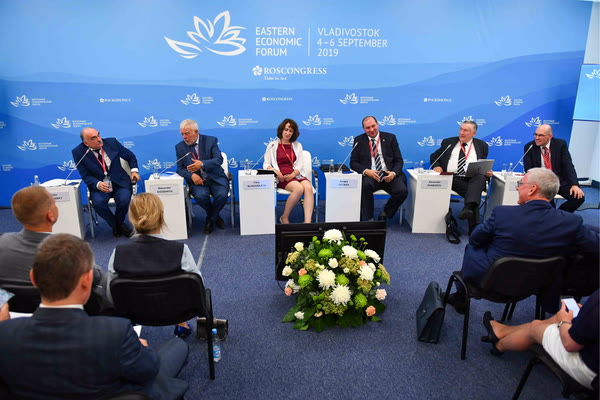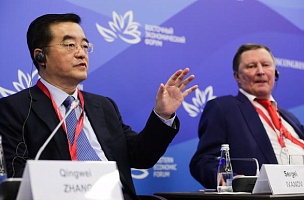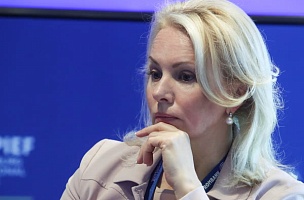KEY CONCLUSIONS
Coal industry plays
an important role in Russia’s economy
“Coal shipment, coal mining and coal industry in general in Russia is
growing at an incredible pace: every year is record breaking in this industry,”
Victor Ryadinsky, Expert, Federal Supervisory Natural Resources Management
Service, Ministry of Natural Resources and the Environment of the Russian
Federation; Winner of the Ecology Prize of the Government of the Russian
Federation.
“Coal is the fourth biggest element adding money to the budget, after
oil, gas and metals. That is why Russia mines and exports large volumes of
coal. Starting from 2000, coal mining has been on the rise. In 2018, 493
million tonnes of coal were extracted in mines and deposits and shipped to both
domestic and foreign markets. <…> Russia is the world’s 6th
biggest coal miner and 4th biggest coal exporter," Alexander Agоshkov, President, Pacific Academy of Environmental and Health Sciences;
Head of the Department of Life Safety in Technosphere, Far Eastern Federal
University.
Coal mining and
shipment has a negative environmental impact
“Large volumes of coal, bulk freights and dusty freights resulted in
environmental problems. You know that they concern Nakhodka, Vanino and Posyet.
<…> Coal dust is still a factor that impacts both environment and
people,” Alexander Agоshkov, President, Pacific Academy of
Environmental and Health Sciences; Head of the Department of Life Safety in
Technosphere, Far Eastern Federal University.
Russian government
and business put special emphasis on resolving coal dust problems
“Coal dust caused a major outcry. In 2017, this situation was taken
under the President’s control. We have reached the point when environmental
problems could not be ignored any longer, it is no longer possible,” Yana
Blinovskaya, Doctor of Technical Sciences; Professor, Department of Life Safety
in Emergencies and Environmental Protection, Far Eastern Federal University
(FEFU).
“Stevedores have signed high-level agreements with the Administration of
Primorye Territory, corresponding ministries, Rospotrebnadzor, the Ministry of
Transport and Rosmorport that provided for a number of measures to improve the
environmental situation. The budget for all stevedores’ environmental measures
in Nakhodka is about 10 billion roubles – it is a significant amount. <…>
All stevedores actually implement these measures – it is not a formality.
<…> Key measures include irrigation, installing wind screens that reduce
kinetic energy in the wind, using substances that facilitate dust
consolidation, as well as improving culture of port workers – they all help us
minimize coal dust related risks,” Vladimir Grigoryev, Member of the Board of
Directors, Association of Commercial Sea Ports; General Director, AO Nakhodka
Trade Seaport.
Existing measures
show results
“Rospotrebnadzor’s statistics show that the number of violations
detected in air samples went down 3.5 times over the last year. If we take
average morbidity level in the region, especially respiratory diseases,
Nakhodka has always shown a lower one. We are getting fewer complaints from
locals. <…> This means that the President’s instruction on improving the environmental situation in Nakhodka is being purposefully and gradually executed. That is why we must keep on to reach the results, to fulfil the task of the President’s
instruction: to create good
conditions for the population,” Vladimir Grigoryev,
Member of the Board of Directors, Association of Commercial Sea Ports; General
Director, AO Nakhodka Trade Seaport.
PROBLEMS
Unresolved issue of open-air coal transshipment
“Naturally, dust flows are formed <…>. Taking into account their location and
our climate, the wind, the dust is carried towards Nakhodka and Posyet,” Alexander Agоshkov, President, Pacific Academy of
Environmental and Health Sciences; Head of the Department of Life Safety in
Technosphere, Far Eastern Federal University.
No legal framework for closed coal transshipment
“The Best Available Technique guidance does not contain the term ‘closed transshipment’, nor are there events that would require construction of hangars that big. We think that this is most probably true. It is important for people to
realize that building a huge hangar is not an efficient and effective measure.
<…> I have not come across any stevedores transshiping millions of tonnes
of coal so far that would have these large closed hangars. I think, it means
that they must have thought it through and concluded that it was not a cure-all
solution,” Vladimir Grigoryev, Member of the Board of
Directors, Association of Commercial Sea Ports; General Director, AO Nakhodka
Trade Seaport.
“There is no legal framework regulating construction of closed terminals
like that”, Alexander Agоshkov, President,
Pacific Academy of Environmental and Health Sciences; Head of the Department of
Life Safety in Technosphere, Far Eastern Federal University.
No clear and transparent standards and methods for
pollution monitoring
“As for bed deposits, the important point worth noting is that there are no existing standards to regulate storage of many pollutants. This makes it difficult to assess the actual situation: what to compare
it with, what are maximum concentration limits. Since there are no standards,
it is quite hard to draw an objective picture, especially when a large number
of water consumers are in the area,” Yana Blinovskaya,
Doctor of Technical Sciences; Professor, Department of Life Safety in
Emergencies and Environmental Protection, Far Eastern Federal University
(FEFU).
“There is no method of dust coal sampling around coal terminals in
Russia so far,” Alexander Agоshkov, President, Pacific Academy of Environmental and Health Sciences; Head of the Department of Life Safety in Technosphere, Far Eastern Federal University.
SOLUTIONS
Using best available technologies
“The system of information and technical reference books and individual
state standards has been created within the past 5 years. <…> As for the
best available techniques, some elements have been borrowed from the expertise
of other countries. <…> If we take a look at the industry-specific
Information and Technical Reference Book 46, we can find a range of solutions
that include disposal, toxicity class downgrade. Toxicity class downgrade is decontamination for disposal, a new technology, that is
part of national environmental expertise. <…> The list [of the best
available technology measures] can be extended. <…> And I think they will comply with the needed requirements, addressing regional
environmental and economic factors,” Sergey Ostakh, Head, Scientific and
Technical Section for Best Available Technique Reference Documents, Ministry of
Industry and Trade of the Russian Federation.
Research for finding most environmentally efficient solutions
“If there is no top-level fundamental research or if it is too theoretical, everything will be as
usual: excellent technology, excellent regulation, everything is working
perfectly well, but when it comes to decision making, half-way and ineffective
decisions are made. <…> Every implemented best available technology must
be accompanied by sufficient research and development, including experimental
in-lab and in-field research,” Alexander Shabarov, Professor, University of
Tyumen (UTMN); Honoured Scientist of the Russian Federation.
“Coal stevedores that are operating around Nakhodka Bay take additional initiative, providing not only scientific data, but also assessment of the effect of anti-dust measures. All this combined provides more efficient
ecological argumentation and measures concerning both the environment and
health,” Yana Blinovskaya, Doctor of Technical
Sciences; Professor, Department of Life Safety in Emergencies and Environmental
Protection, Far Eastern Federal University (FEFU).
For more information, visit
the Roscongress Foundation’s Information and Analytical System at roscongress.org/en.






